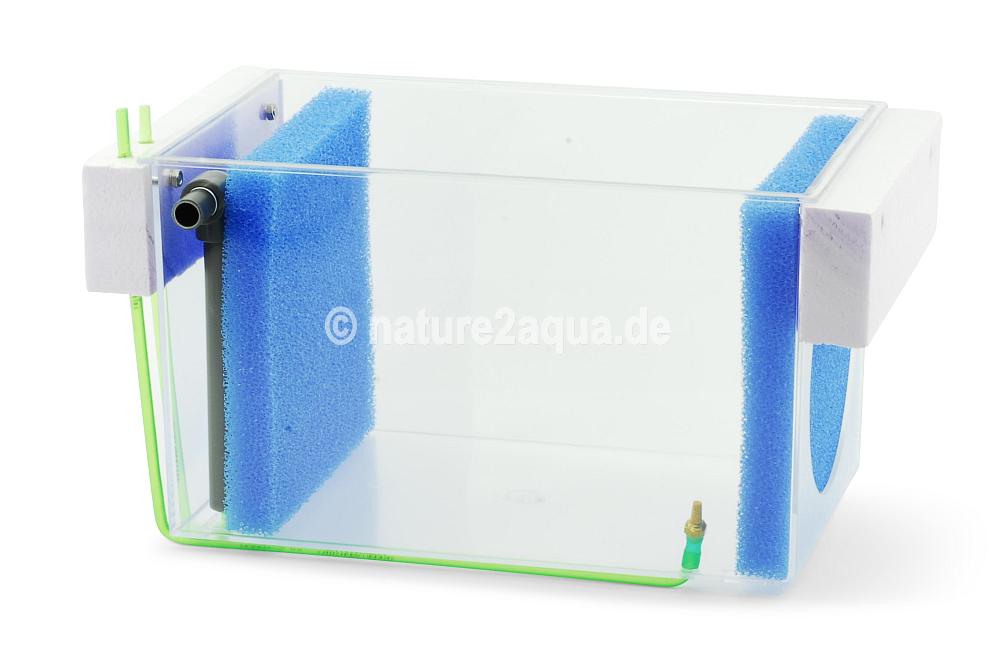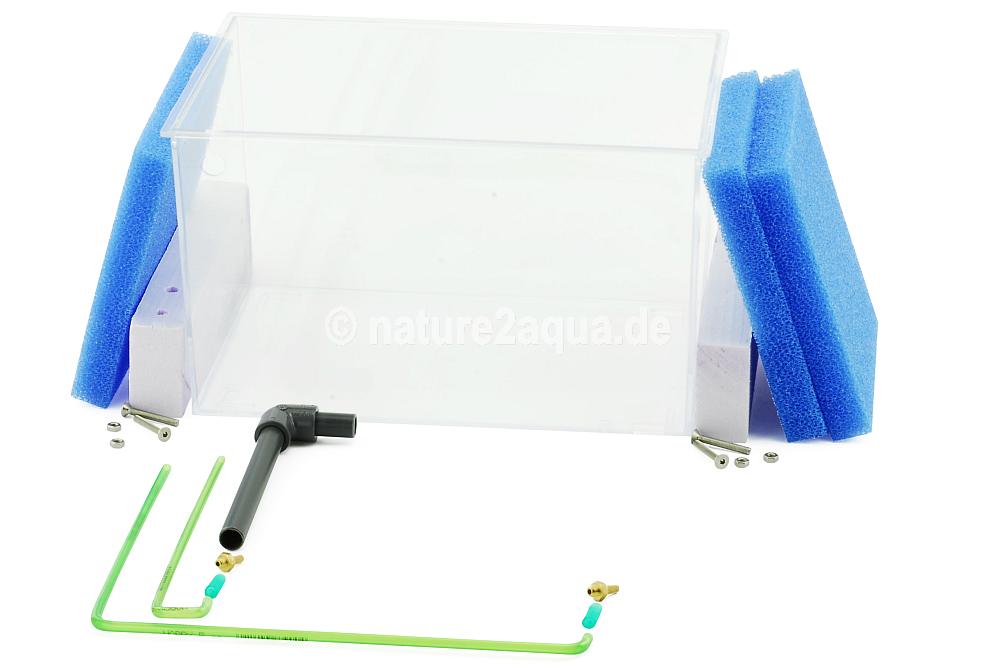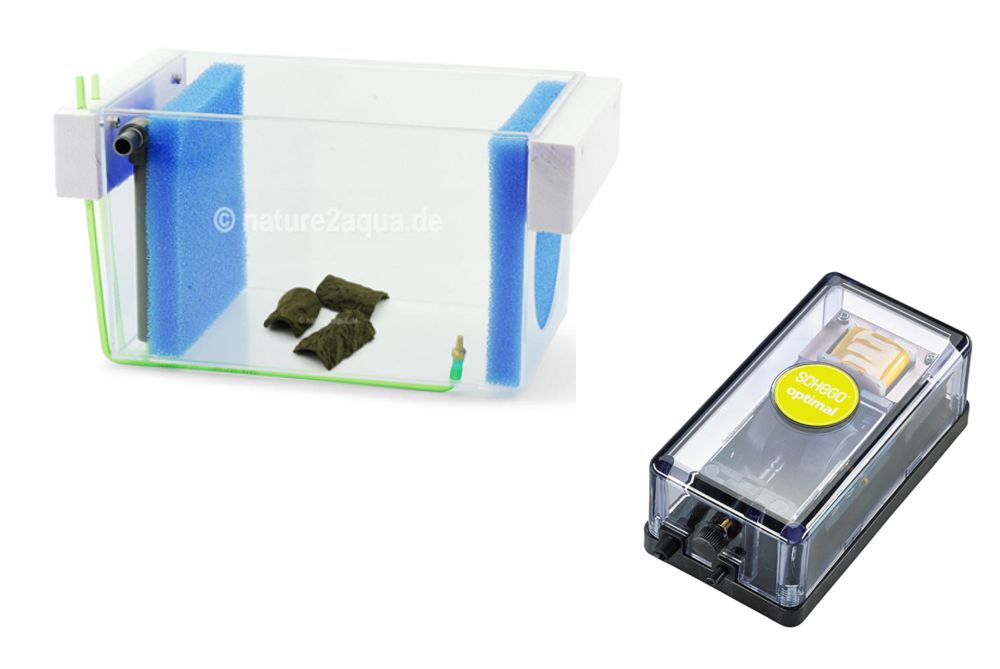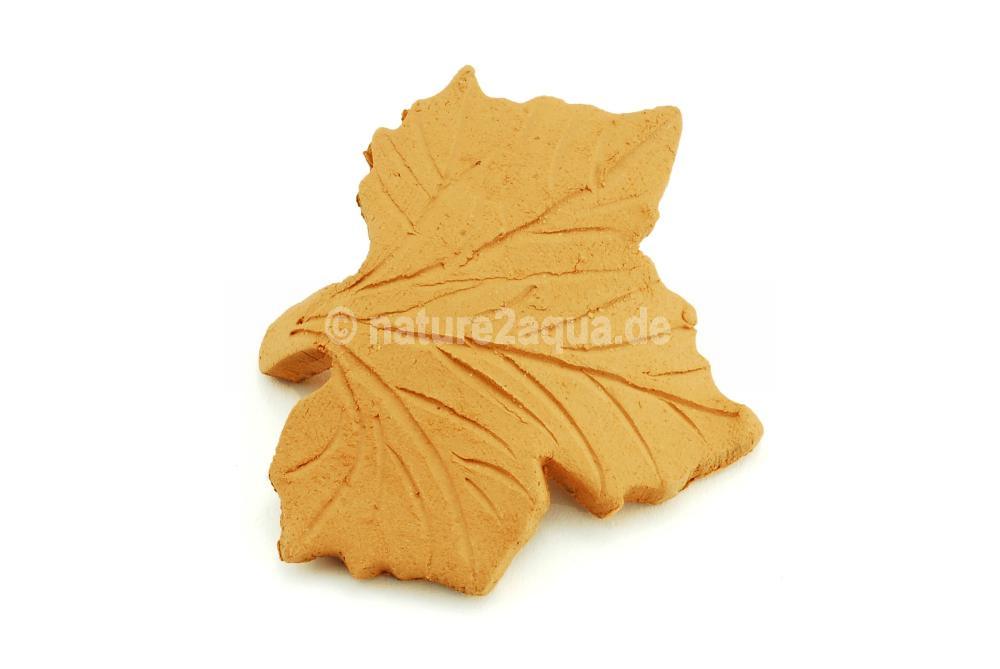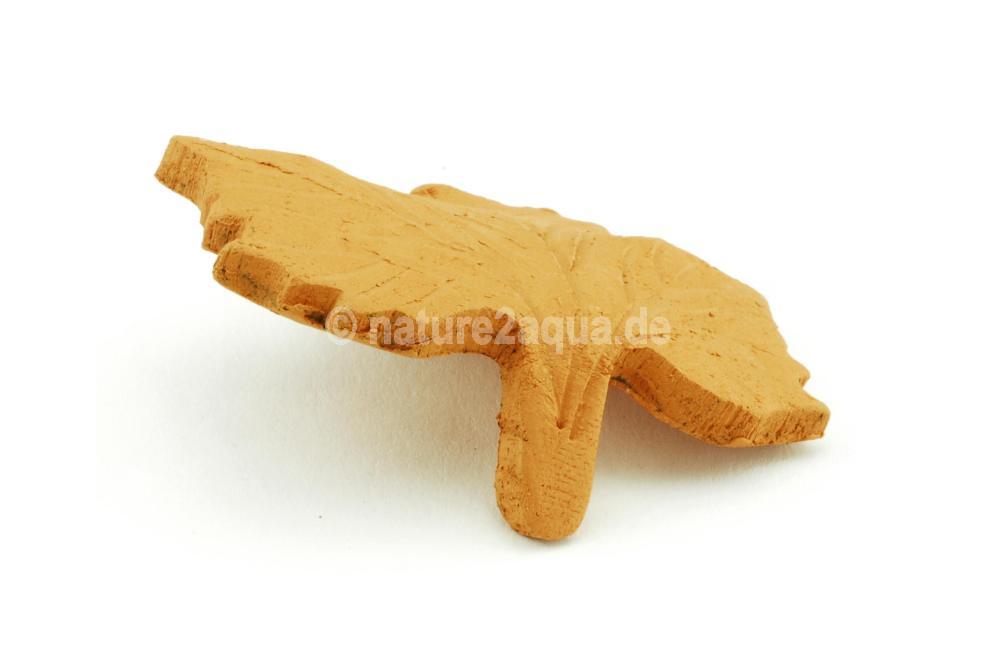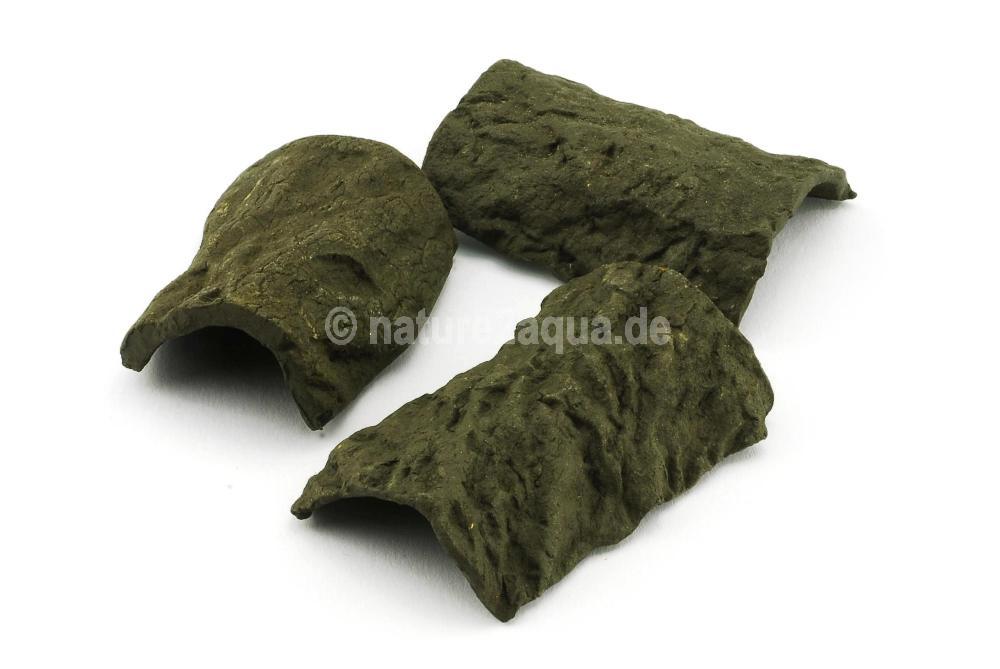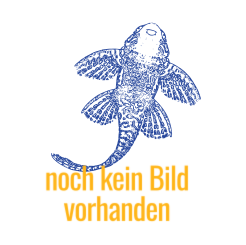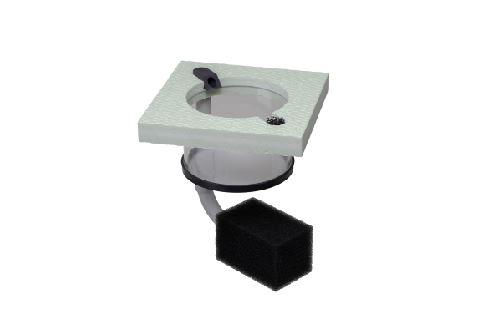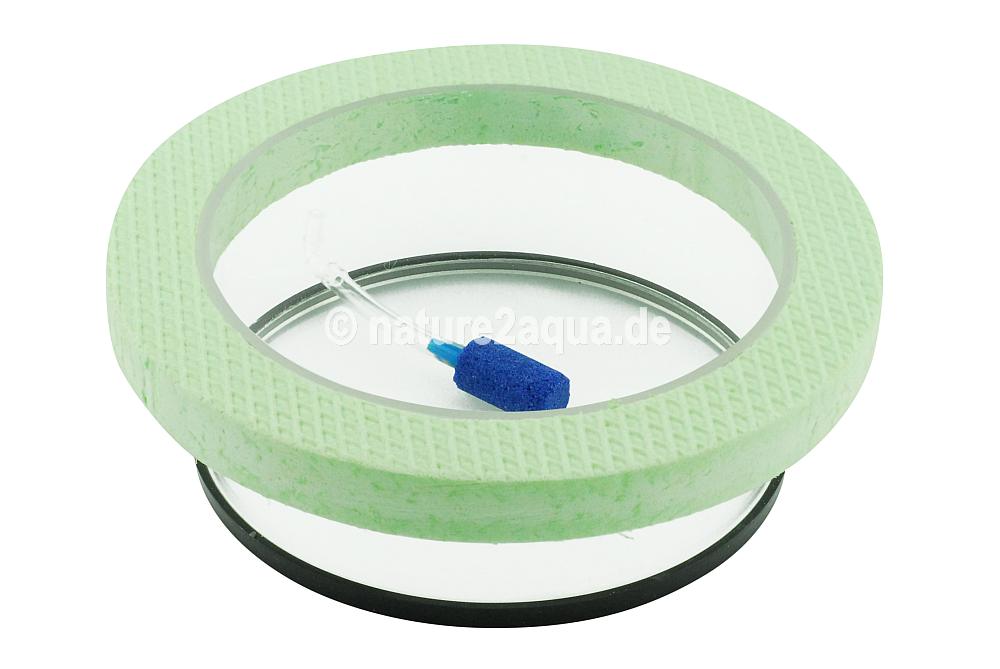Description
Hanging box for the rearing of juvenile fish and for targeted care of individual fish/shrimp/crabs
incl. hiding place for your fry
Your L-catfish (or other fish) finally have new offspring and you want to raise the young fish without problems and safely? For this, the young ones need constantly abundant high-quality feed. In a simple, passively penetrated hanging box, heavy soiling frequently occurs (particularly on a close-meshed gauze) and formation of bacterial lawns. This has an adverse effect on the development of the young fish and losses are increasing. To avoid this, we have developed the floating rearing box with its independent filter system. Constant inflow of fresh water (the water is exchanged approximately 20-30 times an hour) allows a highly dosed feeding and guarantees best growth with high survival rates of your young fish in a small space. Detailed information can be found here.
The main advantages of our breeding box:
- floats in the aquarium and requires no hanging or fixation
- with a few movements it is easily and completely disassembled for optimal cleaning
- has its own filter system and a separate air supply
- its buoyancy also allows additional weight such as ceramic caves or hiding places
- no blocking of gauze interfaces
- filter changes can be done when the breeding box is in operation, without the fish must be taken out
Content: ca. 5,6 l
Outer dimension: ca. 30,5 x 17 x 15,5 cm (LxWxH)
Usable area: ca. 19 x 15 cm
possible additional load: ca. 400 g
Air pipe ∅ 5 mm (connection via standard 4/6 mm air tube)
fully assembled, incl. exchangeable filter mat (total 3 filter mats)
Depending on storage supply incl. bark hiding place 4×5 cm or 1-3 clay leaves depending on container size.
For operation, a commercially available air/diaphragm pump is sufficient. If both connections are to be used, a pump with 2 connections is needed or – with only one connection available – a distributor piece (T-piece).
two different filters:
Filter PPI 30 e.g. for L-Catfish
Filter PPI 45 (extra fine) for e.g. Corydoras

